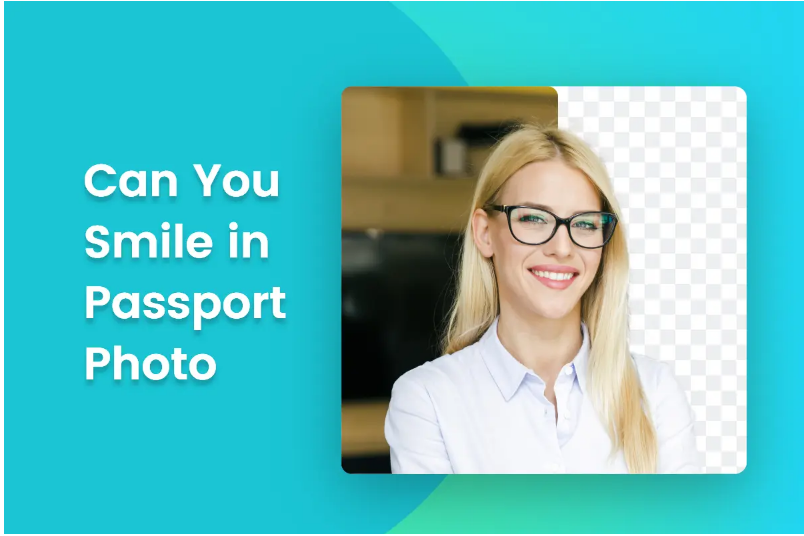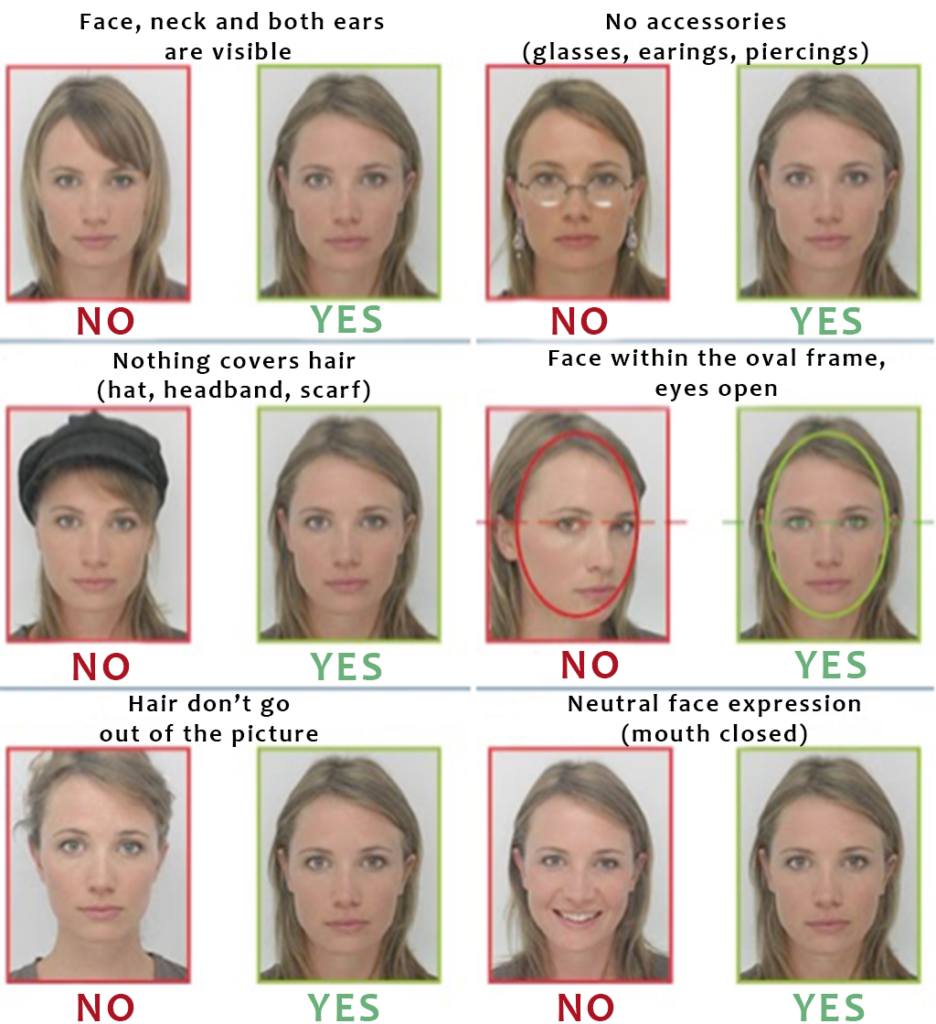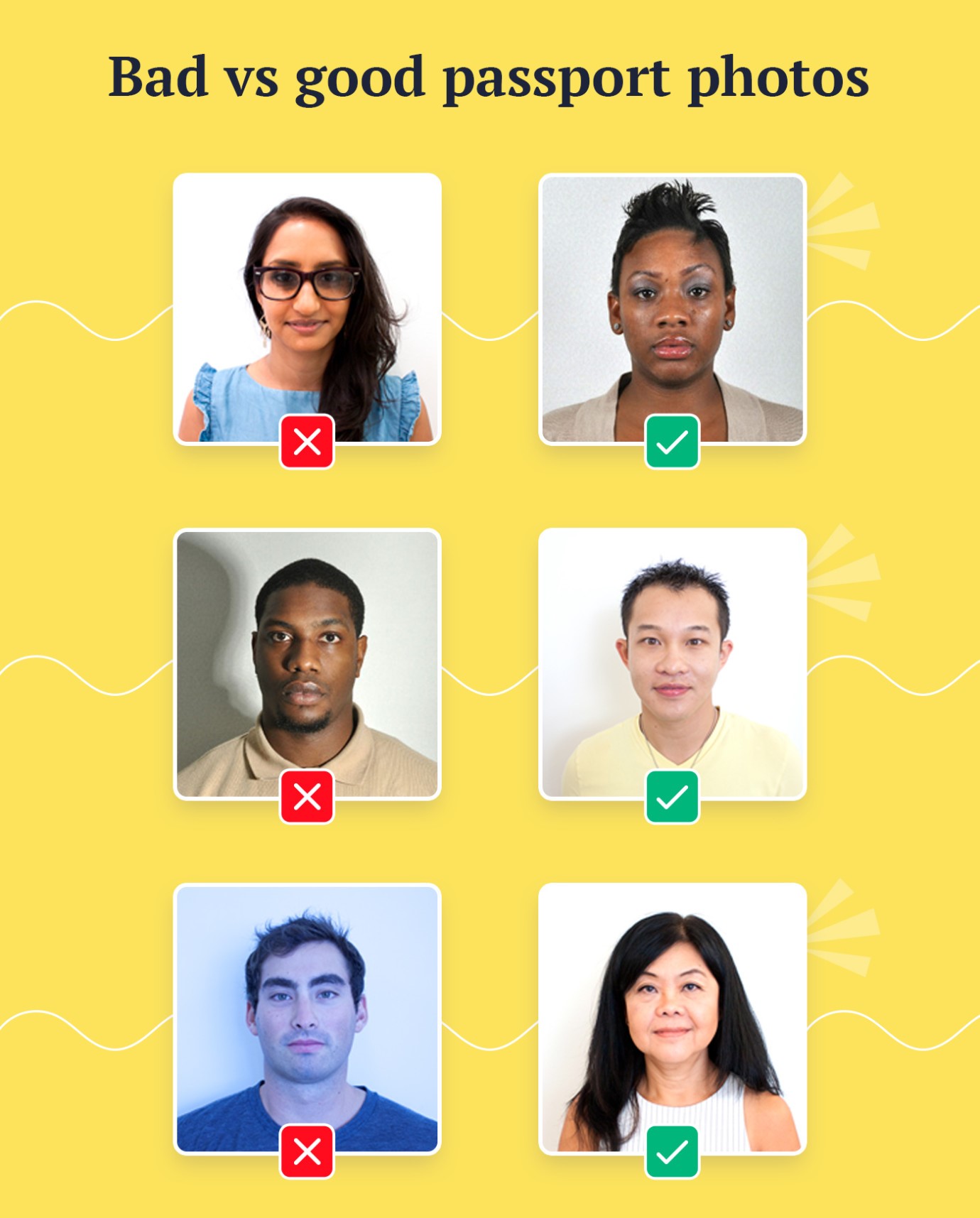Can You Smile In A Passport Photo? Country-by-Country Guide
Can You Smile in a Passport Photo? | Country-by-Country Guide: Learn the passport photo smile requirements for every country in the world, so you can get your photo approved and start traveling.
Author:Paolo ReynaReviewer:James PierceNov 09, 202328.5K Shares385.6K Views

Can You Smile in a Passport Photo? Avoid getting your passport photo rejected by learning the smile requirements for every country in the world.
A passport photo is a small, carefully composed image of an individual's face, typically used for official identification purposes, most notably for passports. These photographs serve as a visual representation of the passport holder and are used to confirm their identity at immigration checkpoints, border crossings, and other security-related situations. Passport photos are an essential component of any passport application and renewal process, making them a vital part of international travel and identification.
Passport photo requirements can vary from country to country, so it is important to check the specific requirements for the country you are traveling to before you get your photo taken. If your photo does not meet the requirements, it may be rejected and you will need to get a new photo.
If your passport photo does not meet the requirements, you may be delayed at the border while immigration officials try to verify your identity. This can be a frustrating and time-consuming experience. Passport photos are used to verify your identity at borders and other entry points. If your passport photo is not clear or if it does not accurately represent your appearance, it could make it easier for someone else to steal your identity and travel on your passport.
The Neutral Expression Rule
Common Requirement Of A Neutral Expression In Passport Photos
- Global Consistency -One of the primary reasons for the requirement of a neutral expression in passport photos is to maintain global consistency. A neutral expression is generally easier to standardize and recognize across diverse cultures and backgrounds. It reduces the likelihood of misinterpretation or misidentification due to cultural differences in facial expressions.
- Facial Recognition Technology -Modern passport and identification systems often use facial recognition technology. A neutral expression provides a clear and consistent baseline for these systems to match against. Any significant deviation from neutrality, such as a smile or a frown, can hinder the accuracy of these systems.
- Reduced Ambiguity -A neutral expression minimizes ambiguity in a person's facial features. Smiles, for example, can alter the shape of the eyes, cheeks, and mouth, making it challenging to maintain consistency in identification.
- Serious Demeanor -Passports are primarily used for identification and security purposes, and a neutral expression is believed to convey a more serious and straightforward demeanor. This helps in maintaining the professional and serious nature of passport documents.
A Neutral Expression Entails
A neutral expression in a passport photo typically involves the following characteristics:
- Mouth Closed -Your mouth should be closed, and your lips should be together without a smile. Any expression involving the mouth, whether it's a grin or frown, is generally discouraged.
- Relaxed Facial Muscles -Your facial muscles should be relaxed, with no raised eyebrows, furrowed foreheads, or tensed facial features. The goal is to have a calm and natural look.
- Eyes Open and Visible -Your eyes should be fully open and visible. Glasses should not cause glare or reflections, and you should avoid squinting or excessive blinking.
- Straightforward Gaze -Your gaze should be direct and straightforward, with your face positioned in a way that is front-facing and not tilted or turned. The goal is to have a head-on view of your face.
- No Raised Eyebrows -Raised eyebrows, often associated with a friendly or inquisitive expression, should be avoided. Your eyebrows should be in a relaxed, neutral position.
Exceptions To The Rule
There are specific cases where a smile is allowed, often for practical or cultural reasons.
Specific Scenarios Where Smiles Are Acceptable
- Children and Infants -Many countries understand that infants and very young children may naturally smile or show some expression in their photos. In these cases, a gentle and natural smile is generally allowed. It's essential for the child's eyes to be open and visible, but a neutral expression might be difficult to obtain.
- Religious Headwear -Some countries make allowances for individuals who wear religious head coverings, such as turbans or hijabs. In such cases, the passport applicant is often allowed to maintain a pleasant expression as long as the eyes and face remain fully visible.
- Medical Conditions -Individuals with certain medical conditions or disabilities may find it difficult to maintain a neutral expression. Some countries recognize this and make exceptions for these cases, allowing for a small, natural smile or expression.
- Official Documentation -It's important to note that in cases where a smile is allowed, there may be specific documentation requirements. For instance, a medical certificate may be necessary for those with medical conditions. Additionally, the passport applicant might need to provide a valid reason for having a smile in their photo, such as citing cultural or religious reasons.
- Photographer Guidance -If you're unsure about the specific rules in your country or have special circumstances, it's advisable to consult with a professional passport photographer. They can provide guidance on meeting the requirements while accommodating any exceptions.
It's essential for travelers to be aware of their specific country's rules and guidelines for passport photos. While a neutral expression is the standard, exceptions exist to accommodate cultural, religious, and practical considerations, especially for children and individuals with unique circumstances. In the following sections of this article, we will explore the passport photo rules in various countries, including those that allow a smile in specific scenarios.
Country-by-Country Guide To Passport Photo Smile Requirements
- United States - In the United States, the general rule is to maintain a neutral expression. Smiles are not allowed, and the mouth should be closed. The goal is to have a clear, straightforward, and neutral look.
- Canada - Canada follows a similar guideline to the United States. A neutral expression with a closed mouth is preferred in Canadian passport photos. Smiles are generally not allowed.
- United Kingdom - In the United Kingdom, a neutral expression is the norm. Smiles are discouraged, and the mouth should be closed. However, a slight, natural smile may be permitted, especially for children and infants.
- Australia - Australia typically requires a neutral expression with a closed mouth in passport photos. Smiles are generally discouraged. However, infants and very young children may be allowed to have a gentle, natural smile.
- New Zealand - New Zealand follows the international standard of a neutral expression. Passport photos should have a closed mouth, and smiles are generally not allowed. Exceptions may be made for infants.
- France - France traditionally adheres to a neutral expression with a closed mouth in passport photos. Smiles are discouraged. However, for children aged six or under, a natural, slight smile may be permitted.
- Germany - Germany typically requires a neutral expression in passport photos. Smiles are not allowed, and the mouth should be closed. Exceptions may be made for very young children.
- Spain - Spain generally follows the rule of a neutral expression with a closed mouth. Smiles are discouraged, but for infants and children aged five and under, a slight, natural smile may be allowed.
- Italy - In Italy, passport photos should have a neutral expression with a closed mouth. Smiles are not encouraged. However, exceptions may be made for infants and children under six years old.
- Japan - Japan typically requires a neutral expression with a closed mouth in passport photos. Smiles are generally not allowed. The goal is to maintain a serious and straightforward demeanor.
- China - China, like many other countries, requires a neutral expression in passport photos with a closed mouth. Smiles are discouraged, and a calm, natural look is preferred.
- India - India typically follows the international standard of a neutral expression in passport photos. Smiles are generally not encouraged, and the mouth should be closed. However, for infants and very young children, a natural, gentle smile may be allowed.
It's essential for travelers to be aware of the specific passport photo requirements in their respective countries, as these rules can change over time.
Tips For A Perfect Passport Photo
Attire
- Wear plain, dark-colored clothing. This will help your face stand out and make it easier for facial recognition software to identify you.
- Avoid white clothing, as it can blend in with the background.
- Avoid patterns and stripes, as they can be distracting.
- Avoid hats, sunglasses, and other headwear, unless you wear them for religious or medical reasons.
- Make sure your hair is pulled back so that it does not cover your face.
Lighting
- Choose a well-lit area. This will help to ensure that your face is evenly lit and that there are no shadows on your face.
- Avoid direct sunlight, as this can create harsh shadows.
- If you are taking your photo indoors, use a softbox or other diffuser to soften the light.
Background
- Use a plain white or light gray background. This will help your face stand out and make it easier for facial recognition software to identify you.
- Avoid busy backgrounds, as they can be distracting.
Facial Features
- Look directly at the camera.
- Keep your mouth closed and your eyes open.
- Have a neutral expression.
- Avoid smiling, as this can distort your facial features.
Real-World Experiences
Here are some real-world experiences of travelers dealing with passport photo issues:
- A traveler was denied entry to a country because her passport photo was too old. She had to get a new passport photo and wait for a new passport to be issued before she could travel.
- A traveler was delayed at the border because his passport photo did not meet the requirements. He had to have his photo taken again before he was allowed to enter the country.
- A traveler's passport photo was rejected because she was wearing sunglasses. She had to have her photo taken again without sunglasses.
- A traveler's passport photo was rejected because he was smiling. He had to have his photo taken again with a neutral expression.
These stories highlight the importance of adhering to the passport photo rules. If your passport photo does not meet the requirements, you may be denied entry to a country, delayed at the border, or have your passport photo rejected.
Here are some tips to avoid passport photo issues:
- Check the passport photo requirements for the country you are traveling to before you get your photo taken.
- If you are getting your photo taken at a professional photo studio, be sure to tell the photographer that you need a passport photo.
- If you are taking your photo yourself, be sure to follow the tips above.
- Once you have taken your photo, review it carefully to make sure that it meets all of the requirements.
Can You Smile In A Passport Photo FAQs
Can You Wear Lipstick In Passport Photo?
It should not be too obvious: Wearing makeup is okay, and passport officials even expect that many applicants will wear some makeup. Even so, the makeup should take on a no-makeup approach. Go with nude colors and avoid bold options like red lipstick and cat eyes.
What Cannot Be Worn In Passport Photos?
Passport photos are not the place to make fashion statements. The State Department wants your photo to be "taken in clothing normally worn on a daily basis." However, no uniforms or clothing that looks like a uniform. Also, no camouflage attire. You should not wear a hat or head covering in your photo.
Can I Use Photo Editing Software To Adjust My Expression In A Passport Photo?
Using photo editing software to alter your expression in a passport photo is generally not recommended. It's essential to have a naturally captured image that accurately represents your facial features for security and identification purposes.
Conclusion
The question "Can you smile in a passport photo" is one that demands careful consideration. Passport photo regulations vary from country to country, but the general rule is to maintain a neutral expression with a closed mouth. While there are exceptions for children and specific scenarios, adhering to these rules is of paramount importance.
Smiling, though a common and natural expression, can lead to complications in the passport application process. It's not a matter of aesthetics; it's a matter of efficient identification and international security. Passport photos serve as a vital link between your identity and your travel documentation, and any deviation from the specified guidelines can result in delays, added costs, and, in some cases, legal consequences.
So, when you prepare to have your passport photo taken, remember that neutrality is the key. By following the established rules for passport photos, you'll ensure a seamless and hassle-free travel experience where your identity can be quickly, accurately, and securely verified at borders and customs checkpoints worldwide. Your passport photo may be serious, but its significance in safeguarding your travels is nothing to smile about.

Paolo Reyna
Author

James Pierce
Reviewer
Latest Articles
Popular Articles

